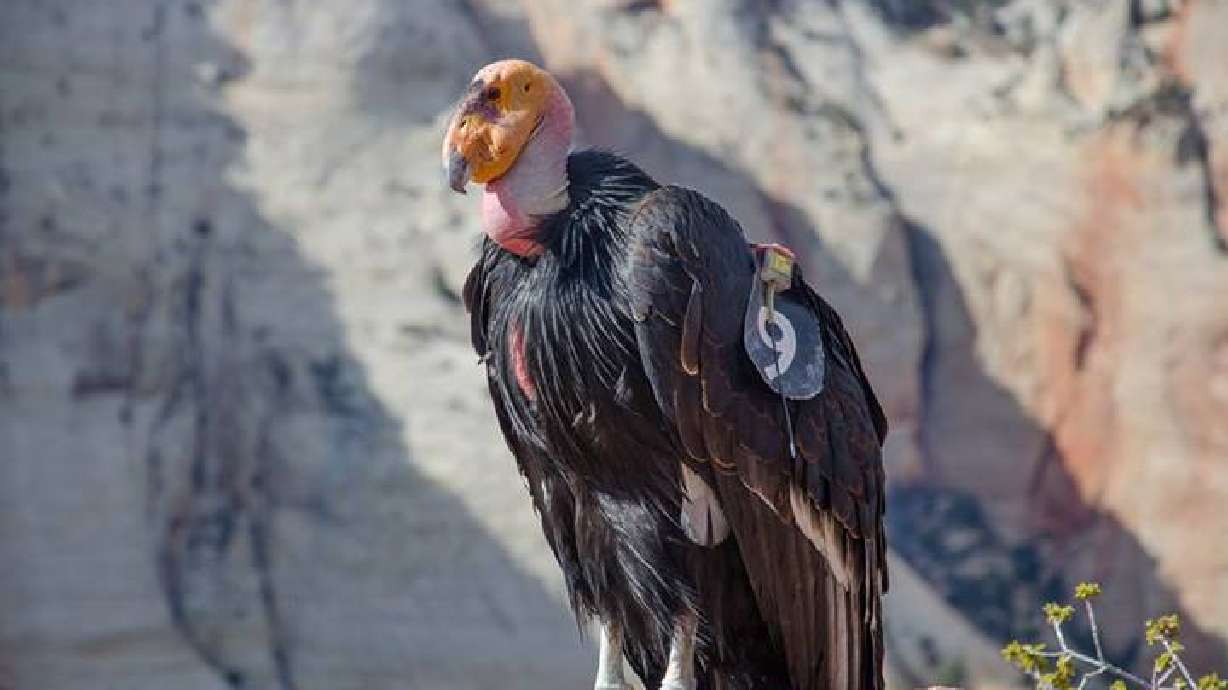Estimated read time: 3-4 minutes
This archived news story is available only for your personal, non-commercial use. Information in the story may be outdated or superseded by additional information. Reading or replaying the story in its archived form does not constitute a republication of the story.
ZION NATIONAL PARK — The Condor Recovery Program just confirmed its 1,000th California condor chick, a member of an extremely endangered species which has slowly been reintroduced to the American West over the past four decades.
Zion National Park’s biologists discovered a California condor nest with a chick in it near Angel’s Landing, according to a National Park Service press release. The chick is the product of efforts from citizens, government, biologists and other agencies all dedicated to keeping these magnificent birds alive and soaring.

There were only 22 California condors left on the planet in 1982, according to the press release. Due to the rapid decline, those condors still alive in the wild were captured and taken into captivity for safekeeping.
Captivity of the rare birds led to a captive breeding program, which has paved the way to reintroducing these endangered birds back into the wild, according to the press release. They began reintroducing the birds to the wild in 1992, and then again in 1996 in both California and Arizona, and have continued introductions throughout the 21st century.
“After over two decades of efforts to restore condors to the Southwest, it is nice to take a moment to reflect on the steady and slow progress made and thank those who have contributed so much, like Zion National Park, to see this effort through,” Chris Parish, director of conservation for The Peregrine Fund, said in the press release. “We have a long way to go, but today we celebrate this milestone.”
Each confirmed California condor both in the wild and in captivity is given a “studbook number” to keep track of them throughout their lives, and Zion’s new chick was the 1,000th, according to the press release. The total population of California condors currently alive in the wild is 500, marking a milestone that shows great progress toward recovery for the species.
The chick’s mother, condor 409, was hatched in captivity at the San Diego Zoo and let go in 2008 at the Vermilion Cliffs National Monument in Arizona, the press release said. The father, condor 523, was also hatched in captivity at The Peregrine Fund’s World Center for Birds of Prey in Boise and was released at the Vermillion Cliffs in 2011.

The two condors have been together since 409’s first mate, condor 377, died of lead poisoning two years ago, the press release said. This chick is her third, but the first two did not fledge successfully.
"We are so excited to hear about this monumental milestone in the condor recovery program," Russ Norvell, Utah Division of Wildlife Resources avian conservation program coordinator, said in the press release. "We also applaud Zion National Park for their great stewardship of these particular birds. We look forward to continued success with all our partners in helping this endangered species."
Forty-thousand years ago, this ancient species would have been seen throughout most of North America scavenging on mammoths and giant sloths, the press release said. They now only cover a small range in Utah, Arizona, California and northern Mexico.
California condors also are only able to hatch one egg every two years as young California condors rely on their parents for food for as long as a year, thus causing them to miss the next breeding season, the press release said. Lead poisoning is the primary cause of condor death and the main obstacle to full recovery for the species, so hunters and organizations are working to reduce the amount of lead in the environment to help increase survival rates.
Learn more about the California condor recovery program here.
Editor's note: The content of this article was taken from a press release sent out by the National Park Service. This is not information gathered by KSL.com reporters.









